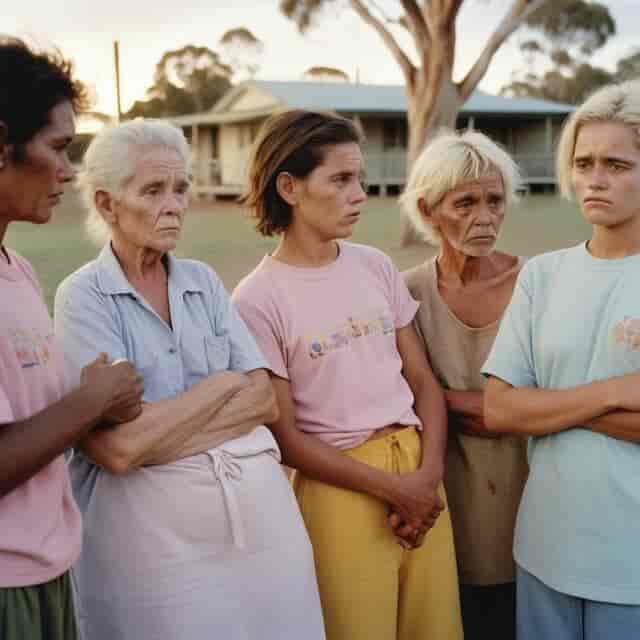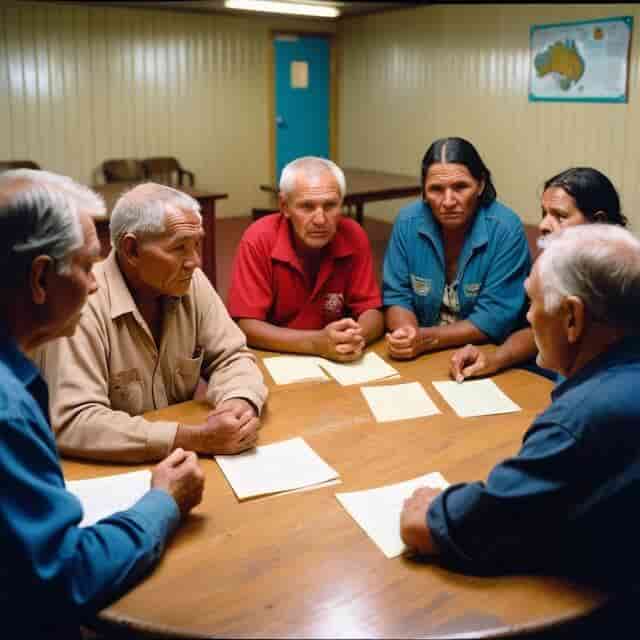The rural health crisis in Australia has reached a point of no return. In the vast expanses of Australia’s outback, hidden beneath the rugged beauty and distinctive Australian drinking culture, lies a growing crisis of alcohol and drug challenges, often overshadowed by the urban-centric gaze of public health initiatives. This pressing issue not only underscores the unique difficulties faced in rural and remote communities but also highlights a critical gap in addiction treatment and mental health care access. The importance of addressing substance abuse within these communities cannot be overstated, as it plays a pivotal role in the overall well-being of individuals and the fabric of these communities at large.
This article aims to shed light on the prevalence of substance abuse in Australia’s remote areas and the contributing factors, ranging from socioeconomic challenges to the nuances of the Australian drinking culture and the use of alcohol and drugs as a form of mental health pain management. It will explore the impact of substance abuse on health and well-being, while also addressing the significant hurdles that individuals face in accessing addiction treatment in the countryside. Furthermore, we will delve into the role of telehealth and other innovative solutions in bridging the gap in mental health treatment access in rural and remote communities, alongside successful case studies and programs that have made strides in combating this issue. Ultimately, this piece seeks to spark a conversation on how communities can better address substance abuse, paving the way for healthier, more resilient rural populations.
Overview of Drug and Alcohol Addiction in Rural Communities
In the vast, often isolated areas of Australia’s rural and remote communities, the prevalence and impact of drug and alcohol addiction present unique challenges that differ significantly from those faced in urban centres. These communities, characterised by their geographic isolation and limited access to services, experience higher rates of substance abuse and encounter numerous barriers to treatment.
Alcohol Consumption and Risk in Rural Areas
Statistics from the 2016 National Drug Strategy Household Survey (NDSHS) reveal that individuals aged 14 and older living in regional and remote areas are more likely than their urban counterparts to consume alcohol at levels that pose a risk of harm. In these communities, 8.0% of the population consumes alcohol daily, compared to 5.0% in major cities. Additionally, 21% of residents in rural areas drink in excess of the lifetime risk guideline, compared with 15.4% in urban areas, and 29% exceed the single occasion risk guideline at least monthly, as opposed to 24% in major cities.
Disparities in Drug Use and Its Consequences
While the overall levels of recent drug use are similar across different areas, the type of drugs consumed varies considerably. For instance, the use of ecstasy and cocaine is significantly higher in major cities than in rural settings. However, the burden of disease attributable to alcohol use is notably higher in remote and very remote areas—2.1 and 2.7 times greater, respectively, than in major cities. This increased burden is reflected in higher rates of chronic liver disease, suicide, self-inflicted injuries, and road traffic incidents among rural populations.
Challenges in Accessing Treatment
Access to treatment services is a significant hurdle for residents in rural and remote areas. The rate of clients seeking treatment in these regions is higher than in urban areas, with remote and very remote areas showing the highest rates of treatment per population. Despite this, the geographical spread and fewer resources mean that the average number of treatment episodes per client is lower. Moreover, around 28% of treatment episodes in rural areas involve travel times of an hour or longer, compared to only 10% in major cities. This not only reflects the sparse distribution of services but also highlights the additional burden of travel and associated costs borne by rural residents.
Impact of Social and Economic Factors
The social and economic context of rural communities plays a crucial role in the prevalence of substance abuse. Factors such as higher unemployment rates, lower income levels, and fewer educational opportunities contribute to increased substance use. Additionally, cultural norms and the social acceptability of frequent drinking can exacerbate the problem. The limited availability of leisure and social activities often leads residents to turn to alcohol and drugs as forms of socialisation and stress relief.
The overview of drug and alcohol addiction in rural communities underscores the complex interplay of social, economic, and geographic factors that contribute to the unique challenges faced by these populations. Addressing these issues requires tailored approaches that consider the specific needs and circumstances of rural and remote communities.

Prevalence of Substance Abuse in Remote Areas
Statistical Overview
The prevalence of substance abuse in remote areas of Australia presents a stark contrast to urban statistics, reflecting unique challenges faced by these communities. Data from the 2016 National Drug Strategy Household Survey (NDSHS) highlights that individuals aged 14 and older in regional and remote areas are significantly more likely to consume alcohol at levels posing a risk of harm. Specifically, 8.0% of this demographic consumes alcohol daily, compared to 5.0% in major cities. Furthermore, 21% of those in remote regions drink in excess of the lifetime risk guideline, and 29% exceed the single occasion risk guideline at least monthly, figures that surpass their urban counterparts at 15.4% and 24%, respectively.
In terms of illicit drug use, the levels remain similar across different regions; however, the types of drugs consumed vary significantly. While the overall drug use in the past 12 months stands at 15.6% for both major cities and remote areas, individuals in major cities are more likely to have used substances like ecstasy (2.5% compared to 1.5%) and cocaine (3.2% compared to 1.1%).
Comparison with Urban Areas
The burden of disease attributable to substance use increases with the remoteness of the area. Remote and very remote areas experience 2.1 and 2.7 times, respectively, the burden of disease attributable to alcohol use compared to major cities. This is reflected in higher rates of chronic liver disease, suicide, self-inflicted injuries, and road traffic incidents among rural populations.
Moreover, over the past decade, the rate of drug-induced deaths has risen more sharply in regional and remote areas, up by 41% since 2008, compared with a 16% increase in major cities. This trend has led to higher rates of drug-induced deaths in these remote areas between 2012 and 2016, underscoring the escalating public health challenge.
Factors Contributing to Addiction Rates
Socioeconomic Factors
The relationship between socioeconomic status and addiction rates is profound and multifaceted. Individuals residing in areas with lower socioeconomic advantages often face a myriad of challenges that contribute to higher rates of drug and alcohol use. Chronic stress, stemming from financial instability and job insecurity, exacerbates mental health issues and can lead individuals to use substances as a coping mechanism. Moreover, communities with lower socioeconomic status typically have reduced access to essential services, including educational opportunities and healthcare, further limiting their ability to combat addiction effectively.
Cultural Influences
Cultural factors play a significant role in shaping addiction rates within communities. Social alienation, lack of cohesive social networks, and diminished social support are prevalent in areas where individualistic values dominate, leading to increased substance use. Additionally, the erosion of communal values and the absence of shared social activities can lead to a disconnection among community members, fostering environments where drug use becomes more socially acceptable or seen as a means of coping with social isolation.
Access to Recreational Activities
In rural and remote communities, the lack of accessible recreational activities significantly impacts social well-being and mental health. Engagement in structured leisure activities not only provides vital social interaction but also promotes mental health resilience and can deter substance use. Areas deprived of these social infrastructures face higher addiction rates as individuals lack healthy outlets for stress relief and socialisation. Enhancing access to diverse recreational activities could serve as a preventive measure against the rise in substance abuse rates, offering alternative ways to manage stress and build community ties.
By addressing these key factors—socioeconomic challenges, cultural influences, and the availability of recreational activities—communities can develop more targeted interventions aimed at reducing addiction rates and improving overall community well-being.

Impact on Health and Well-being
Physical Health
The physical health consequences of substance abuse in rural and remote areas are severe and multifaceted. Individuals dealing with substance use disorders often face a higher incidence of chronic diseases such as liver disease, exacerbated by alcohol misuse. Moreover, the use of illicit drugs, particularly injectable substances, increases the risk of transmitting infectious diseases like HIV and hepatitis. Pregnant women using opioids or other substances face higher risks of adverse outcomes like stillbirth and neonatal abstinence syndrome, where the newborn is dependent on opioids. These health challenges are compounded by the lack of specialty treatment programs tailored for women or racial minorities, which discourages treatment utilisation and worsens health outcomes.
Mental Health
Mental health services are critically underserved in rural settings, creating significant barriers to effective substance abuse treatment. The absence of adequate mental health support leads to underutilisation of services, especially among populations that already face disparities in healthcare access, such as nonwhite communities and those without medical insurance. The correlation between poor mental health and substance use is strong, with substance use disorders often linked to increased rates of suicide and psychological distress. Addressing these issues is hindered by the basic unmet needs of the community, such as housing and healthcare, which must be prioritised to improve mental and emotional health outcomes.
Community Well-being
Substance abuse not only affects individuals but also has a profound impact on the broader community’s health and well-being. The social consequences include increased crime rates, domestic violence, and accidents, all of which strain community resources and social services. In rural areas, the challenges are exacerbated by the limited availability of detoxification and behavioural health services, making it difficult to address these issues effectively. The community often faces a cycle of substance abuse and social disruption, which is difficult to break without comprehensive strategies that include improving access to treatment and supporting community-based interventions.
These impacts highlight the urgent need for tailored approaches that address the unique challenges of managing health and well-being in Australia’s remote and rural communities, focusing on both prevention and comprehensive treatment options.
Challenges in Accessing Treatment
Availability of Services
Residents in rural and remote areas of Australia face significant challenges in accessing alcohol and other drug treatment services. The geographical isolation means that treatment centres can be hundreds of kilometres away, imposing not only long travel times but also considerable costs. Furthermore, the availability of specialised services such as detox facilities is limited. This scarcity of services is compounded by long wait times, often extending to three to four months, which can deter individuals from seeking the help they need.
Travel Barriers
The issue of distance plays a critical role in accessing treatment for substance abuse in rural settings. Data indicates that in over a quarter of drug and alcohol treatment episodes involving individuals from regional and remote areas, the clients travelled for an hour or longer to reach a treatment facility. This situation is starkly different in urban areas, where only about one in ten clients face similar travel times. The extensive travel not only adds a physical barrier but also a psychological one, as the burden of disease due to alcohol use in these remote areas is significantly higher compared to major cities.
Stigma and Privacy Concerns
Stigma and concerns about privacy and confidentiality are profound barriers to seeking treatment in rural and remote communities. The close-knit nature of these communities can deter individuals from accessing services due to fear of social judgement and loss of anonymity. This is exacerbated by the limited number of facilities, which increases the likelihood of being recognised. Addressing these concerns is crucial, as stigma not only affects individuals’ willingness to seek help but also impacts the overall effectiveness of the treatment and recovery process.
By tackling these challenges—enhancing service availability, reducing travel barriers, and addressing stigma and privacy concerns—there is potential to improve access to crucial treatment services for those battling substance abuse in Australia’s rural and remote areas.
Telehealth and Innovative Solutions
Telehealth Services
Telehealth has emerged as a transformative solution for delivering healthcare services in rural and remote areas, significantly enhancing access to medical specialists and chronic care management. Programs like Project ECHO® (Extension for Community Healthcare Outcomes) exemplify this advancement by connecting rural primary care providers with academic specialists. This collaboration helps manage complex health conditions, including substance use disorders, ensuring patients receive expert care without extensive travel.
Innovative models such as the Vermont Hub-and-Spoke system expand access to medication-assisted treatment for opioid use disorder. By linking rural areas with urban hubs, this model facilitates a continuum of care that is often lacking in isolated regions. Similarly, Indiana’s Integrated Care Training Program leverages community health workers and certified recovery specialists to address behavioural health issues, providing crucial support in emergency and outpatient settings.
The integration of telehealth services, propelled by the COVID-19 pandemic, allows healthcare professionals in mobile clinics to conduct remote consultations. This not only provides immediate medical advice but also ensures ongoing management of health conditions, improving patient outcomes in underserved communities.
Mobile Clinics and Outreach Programs
Mobile clinics represent a pivotal innovation in healthcare delivery, particularly for addressing opioid addiction in rural and remote areas. These clinics are equipped similarly to traditional healthcare facilities and staffed by a team of professionals, including physicians, nurses, and substance abuse counsellors. They offer a range of services, from medically-assisted treatment (MAT) to general health screenings, significantly reducing waiting times for treatment and providing care directly to underserved communities.
For example, CODAC Behavioural Healthcare in Rhode Island operates a mobile clinic that has significantly impacted its community by offering comprehensive opioid addiction treatment. The holistic approach of this clinic includes outreach and counselling services, which are crucial for recovery and long-term management of addiction.
The benefits of mobile clinics extend beyond immediate healthcare provision; they also build trust and familiarity within communities, encouraging more individuals to seek treatment. By partnering with local organisations, these clinics ensure that healthcare services are accessible and tailored to the needs of the community, fostering a proactive approach to health management.
The use of advanced portable diagnostic equipment and electronic health records (EHRs) in mobile clinics enhances their functionality. Real-time diagnostic capabilities and streamlined patient data management ensure that treatment is both timely and coordinated, which is essential for effective healthcare delivery in remote settings.
Telehealth and mobile clinics are not just stopgap measures but are crucial components of a sustainable healthcare strategy, especially in areas where traditional healthcare infrastructure is lacking. By continuing to support and expand these innovative solutions, we can improve health outcomes across Australia’s remote and rural landscapes, making significant strides in overcoming the barriers to healthcare access.

Successful Case Studies and Programs
Community-Based Initiatives
The Caylus initiative, in partnership with local organisations, has implemented strategies that effectively tackle both the supply and demand of substance abuse in remote Australian communities. By introducing non-sniffable petrol, they have significantly reduced the availability of substances for abuse. Concurrently, the implementation of youth diversionary programs offers constructive activities, diverting young individuals from substance use to more positive engagements. These programs not only provide entertainment but also educational benefits, encouraging regular school attendance and promoting good behaviour among the youth. The local youth workers play a crucial role, forming strong relationships with the children and acting swiftly in crisis situations to prevent outbreaks of substance abuse.
Another impactful community-based approach is the Maranguka Justice Reinvestment Project, which redirects resources back to the community, empowering them to address the root causes of substance abuse and incarceration. Programs like Binar Sports and the Central Australian Youth Link Up Service have also been pivotal. They foster social connections and provide pathways for young individuals to engage positively within their communities. Additionally, initiatives focusing on reconnecting Aboriginal and Torres Strait Islander people with their culture, such as the Red Dust Healing Program and the Yiriman Ranger Project, have shown significant success in nurturing a sense of identity and belonging, which indirectly helps in reducing substance abuse.
Government and NGO Programs
Government and non-governmental organisations have also played a vital role in regulating substance availability and providing harm reduction services. Alcohol management plans initiated by communities themselves have proven effective in reducing alcohol consumption and its associated harms. The substitution of sniffable petrol with Low Aromatic Fuel (LAF) has drastically cut down the prevalence of volatile substance abuse in remote areas. However, challenges persist in maintaining these supply control measures without strong regional strategies.
In terms of harm reduction, several programs have been instituted to mitigate the adverse effects of substance use. For instance, Victoria’s Needle and Syringe Program offers sterile needles, syringes, and safe disposal options, significantly reducing the risks associated with injectable drug use. Retailers in Victoria are also trained to manage the sale of solvents responsibly, preventing misuse. These harm reduction strategies are vital in reducing injury or death from drug use, providing a safety net until individuals are ready to seek treatment and support.
These case studies demonstrate that successful substance abuse programs require a multifaceted approach, incorporating community involvement, cultural sensitivity, and strategic government support to create sustainable change in Australia’s remote and rural areas.
How Can Communities Address Substance Abuse?
Preventive Measures
Communities can play a pivotal role in preventing substance abuse by addressing the underlying social determinants such as inadequate housing, education, employment, and income. These factors are often precursors to the onset of harmful substance use. By improving these foundational aspects, communities can significantly reduce their vulnerability to substance abuse. For example, creating more employment opportunities and enhancing educational facilities can provide young people with alternatives to engaging in substance use.
In rural and urban settings alike, cooperation with various agencies and facilities is crucial. This collaboration ensures that basic needs such as healthcare, transportation, and housing are met, allowing individuals to focus more on recovery and less on survival. Establishing clear rules about alcohol and other drug use, especially among young people, and ensuring these are agreed upon within the community can also serve as an effective preventive measure.
Support Systems
Building robust support systems within the community is essential for addressing substance abuse. This involves developing culturally safe and trauma-informed treatment services, particularly for Indigenous Australians, for whom substance use issues may be compounded by the legacies of colonisation, inequality, and racism. Services need to reinforce Indigenous family systems of care and support, promoting community ownership and control.
Community and school-based programs that work in partnership with local services have shown effectiveness, especially in rural areas. These programs should be designed to provide a safe and fun environment, giving young people a leadership role and involving them in the planning process to increase engagement and effectiveness.
Educational Campaigns
Educational campaigns are vital in raising awareness about the dangers of substance abuse and promoting healthy, alternative behaviours. For instance, Project Ice Mildura, a community-based campaign, successfully raised awareness about the harmful effects of crystalline methamphetamine, leading to community action against the drug. Such educational initiatives should be accompanied by the development of tools for evaluation and continuous improvement of the programs.
Prevention strategies should also include informing the community about the effects and harms associated with substance use, changing laws and regulations that govern the sales of alcohol and tobacco, and providing positive role modelling. Additionally, harm reduction approaches should be employed to reduce the negative consequences associated with drug use, such as needle and syringe programs and opioid substitute programs.
By integrating these strategies—preventive measures, support systems, and educational campaigns—communities can effectively address and mitigate the impact of substance abuse, fostering a healthier environment for all members.

Throughout this article, we explored the multifaceted issues of alcohol and drug challenges in Australia’s outback, underscoring the unique predicaments faced by rural and remote communities. The discussions ranged from the prevalence of substance abuse in these areas, exacerbated by socioeconomic and cultural factors, to the innovative solutions like telehealth and mobile clinics aimed at bridging the treatment gap. We highlighted the role of community-based initiatives and government programs in addressing these challenges, illustrating their potential to create meaningful change.
In navigating the way forward, it is crucial to recognize the broader implications of substance abuse in rural and remote communities, not only for individual health but for the well-being of the community as a whole. Drawing on the successes of various intervention programs, the path ahead requires a collective effort encompassing policy reform, enhanced access to tailored healthcare service, and the continued support of community-driven solutions. By strengthening these pillars, we can bolster the resilience of Australia’s rural populations against the backdrop of this hidden crisis, fostering a future where the health and well-being of these communities are no longer sidelined.
What is the financial impact of the alcohol crisis in Australia?
In 2017-2018, the social cost of alcohol use in Australia was estimated at $66.8 billion. This total includes $4.0 billion in workplace costs, with absenteeism alone accounting for an estimated $3.6 billion.
How is the Aboriginal community impacted by alcohol use?
Problematic alcohol and other drug use in Aboriginal and Torres Strait Islander communities profoundly affects the spiritual, emotional, and physical wellbeing of children, women, and men. This results in significant pain and disconnection, perpetuating the cycle of substance use.
Which Australian state has the highest alcohol consumption?
While residents of Western Australia (WA) are more likely to have consumed alcohol in the past week, Queenslanders have the highest average weekly alcohol consumption.
What is the death toll from alcohol in Australia?
According to the Australian Bureau of Statistics (ABS) Causes of Death report for 2022, alcohol-induced deaths, which include chronic conditions like liver cirrhosis and acute conditions such as alcohol poisoning, resulted in 1,742 fatalities in Australia.

